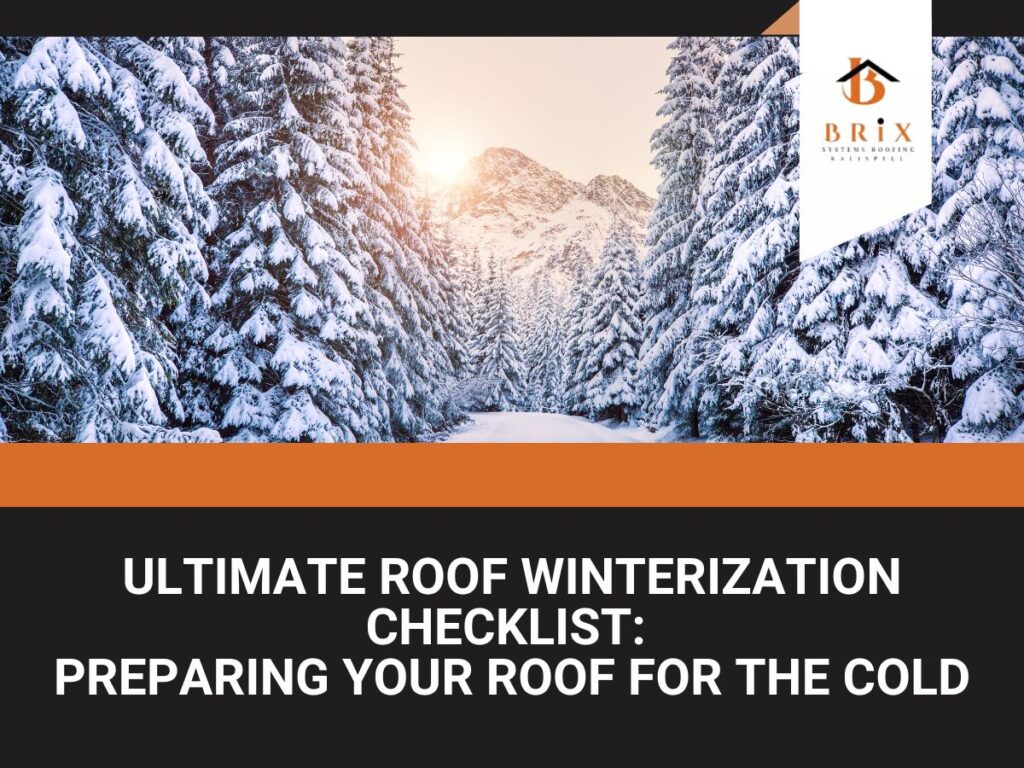
As winter approaches, preparing your roof for the cold becomes a critical task for homeowners. The harsh weather, including snow, ice, and freezing temperatures, can severely test the resilience of your roofing system.
A well-prepared roof not only ensures the safety and comfort of your home's occupants but also prolongs the lifespan of your roof itself. This ultimate roof winterization checklist is designed to guide you through the essential steps and considerations to effectively shield your roof from winter's challenges, ensuring it remains strong and secure throughout the season.
A comprehensive roof inspection involves more than just looking for visible signs of wear and tear; it also requires a keen eye for detail to spot potential issues that could lead to significant damage over time.
Start with checking for pest infestation and mold growth, as these can both undermine the structural integrity of your roof and lead to health problems for the home's occupants. Pests such as termites and carpenter ants can cause unseen damage that compromises your roof's durability. Similarly, mold growth, especially in damp, shaded areas, can rot wood and deteriorate roofing materials.
Equally important is the inspection of seals around vents, chimneys, and flashing. These areas are prone to leaks due to their penetrations through the roof. Ensure that the seals are intact and properly sealed.
Look for any cracks, gaps, or signs of wear in the sealant. In some cases, it may be necessary to reapply sealant or replace flashing to maintain a watertight barrier against water intrusion. Below are key areas to inspect:

When considering roofing materials, the shift towards sustainability is not just a trend but a necessity for environmental conservation and long-term cost savings. Eco-friendly roofing solutions offer several benefits over traditional materials, from improved energy efficiency to reduced carbon footprints.
Examples of Sustainable Roofing Materials:
Table: Comparing Traditional and Sustainable Roofing Solutions
| Aspect | Traditional Materials | Sustainable Alternatives |
| Environmental Impact | High carbon footprint, less recyclable | Lower carbon footprint, highly recyclable |
| Energy Efficiency | Varies, generally lower | Higher, due to insulation and reflective properties |
| Cost Over Time | Higher maintenance and energy costs | Lower energy costs, potential for tax incentives |
| Durability | Varies | Often more durable and longer-lasting |
Sustainable roofing solutions can offer significant cost savings over time, not just through durability and reduced maintenance needs, but also via energy savings.
Eco-friendly materials such as green roofs and solar tiles can provide substantial insulation and energy generation, leading to lower heating and cooling costs. Many sustainable roofing options also qualify for tax credits and incentives, further enhancing their cost-effectiveness.
The environmental impact of traditional roofing materials—such as asphalt shingles, which contribute to landfill waste and have a higher carbon footprint—is significantly higher than that of sustainable alternatives.
By choosing eco-friendly roofing solutions, homeowners can reduce their environmental impact while ensuring their homes are well-protected and insulated, especially during the winter months.
The advent of smart technology has revolutionized the way homeowners approach roof winterization, introducing advanced methods to combat common winter issues such as ice dams and enabling remote monitoring of roof conditions. Smart sensors and heating cables are at the forefront of this technological shift, offering proactive and efficient solutions to maintain the integrity of your roof throughout the cold season.
Table: Benefits of Using Innovative Technology for Roof Winterization
| Technology | Benefits |
| Smart Sensors | Real-time monitoring, anticipates problems, enables preemptive action |
| Heating Cables | Prevents ice dams, conserves energy with controlled usage, integrates with smart sensors for automatic operation |
Unexpected roof problems during winter storms can cause significant damage to your home. Creating an emergency plan is essential to quickly and effectively address these issues, minimizing their impact. Here are steps to develop a comprehensive emergency preparedness plan for winter roof issues:

Creating an emergency plan for winter roof issues requires foresight and preparation. By integrating innovative technology like smart sensors and heating cables, homeowners can proactively address potential problems. Coupled with a solid emergency preparedness plan, these measures significantly reduce the risk of damage, ensuring that your home remains safe and secure throughout the winter months.
Protecting your roof from extreme weather conditions, such as heavy snow loads or ice storms, is crucial to prevent damage that could compromise your home's structure and safety. Here are practical tips to ensure your roof is prepared to withstand these challenges.
While regular homeowner maintenance is important, the benefits of hiring a professional roofer for a comprehensive inspection and maintenance before winter cannot be overstated. A professional inspection can identify issues that may not be visible to the untrained eye, ensuring your roof is in the best possible condition to face harsh winter weather.
Investing in a professional roof inspection and maintenance before winter sets in is a proactive step towards protecting your home. It ensures your roof is prepared to withstand extreme weather conditions, ultimately providing peace of mind and potential cost savings by preventing emergency repairs and extending the lifespan of your roof.
Properly winterizing your roof is an investment in the longevity and safety of your home. By following the Ultimate Roof Winterization Checklist, you've taken proactive steps to protect your roof from the severe weather conditions of winter.
Regular inspections, maintenance, and the integration of innovative technology not only extend the life of your roof but also provide peace of mind knowing your home is prepared for whatever the cold season brings. Remember, the key to avoiding emergency repairs and significant damage is preventative care. With your roof now ready to face the winter, you can enjoy the cozy months ahead with one less worry.